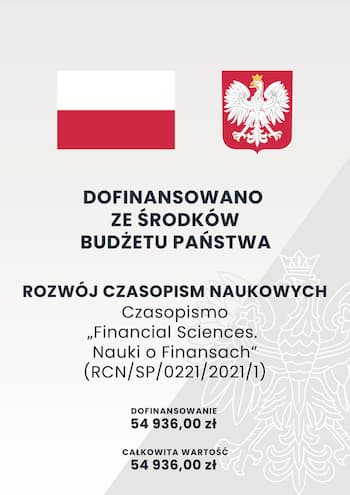Issues
Click a year to expand it.
40 Points
on Ministry of Education and Science journal evaluation list of 2024

Search results for query: Brescia
Sort by: Relevance Author: Ascending Descending Year: Ascending Descending
- Estimation of the Cost in a Paediatric Radiology Service Using Time-Driven Activity-Based Costing (TDABC)
Author: Silvana Secinaro, Valerino Brescia, Aurelio Secinaro, Davide Calandra
See Issue Contents: fins.2021.2
Abstract:Cost estimation is crucial for health accounts analyses in developed and develop- ing countries. This study aims to determine a methodology on the issue of costing systems and costing methods applicable to all health services carried out on a large scale that by their nature have a limited variability of resources (time, materials, human resources, etc..). We use time-driven activity-based costing (TDABC). The average time of health activities has been estimated within the direct observation of the activities and interviews in a paediatric radiology service. Direct and indirect costs have been calculated considering the price per minute for each health service category. TDABC allows calculating the practical expenses of radiology services. This method reveals a higher expenditure than what is reimbursed by the national health service. The empirical study shows high costs for CT and Thoracic spine radiology under sedation, which the national health system does not consider. TDABC can be used by health managers to evaluate the level of costs and to compare the internal results with the reimbursement tariffs from the national health service. This method should be in- cluded gradually as a tool of costs management and considered by policymakers and health managers.
- Investments and Nimby Syndrome in the Waste Management – Analysis on the Example of the Lesser Poland Voivodship
Author: Aleksandra Kultys
See Issue Contents: fins.2022.1
Abstract:The aim of the article was to determine to what extent the NIMBY syndrome may hinder the implementation of investments in waste management in the Lesser Poland Voivodeship. The background of the analysis was the premises of the European Green Deal, including the need to implement a circular economy. The article consists of: an analysis of investment outlays in waste management in Lesser Poland, defining the NIMBY syndrome, and analysis of the results of a survey conducted among respondents in Lesser Poland. As a result of the conducted analysis, it was found that potential investments in waste management should not encounter financing problems. In terms of social resistance, social protests can be triggered by investments in the form of landfills and waste incineration plants. Investments related to waste recycling arouse less public objection. Social opposition grew also when the more pejorative name of the facility was used.
Newsletter






